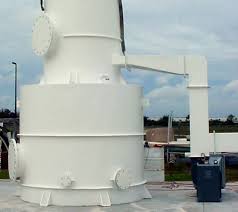
The importance of removing Carbon Dioxide in the water!
Carbon dioxide exists naturally in nature as free CO2 and can be found in many water sources from lakes, streams, or other surface water bodies. Carbon dioxide occurs naturally in small amounts (about 0.04 percent) in the Earth's atmosphere. Monitoring CO2 levels in your water can be done through test kits or monitoring systems. When monitoring CO2 levels, it is important to note the concentration at which the monitoring needs to occur. Industrial level ion exchange systems should be monitored at a concentration typically 15–20 times greater than required for drinking water quality. Ion exchange systems used for high purity water production should be monitored at a concentration typically 40–50 times greater than what is required for drinking water quality. Due to carbon dioxide’s abundance and its role as the primary driver of climate change, there are concerns about increasing concentrations of this gas in the atmosphere. To reduce the amount of carbon dioxide in the atmosphere, people can reduce the amount of carbon dioxide released during energy production by using renewable energy sources and energy efficiency. Carbon dioxide can be captured and stored underground with carbon sequestration technologies.
Carbon dioxide is a minor part of the air that humans breathe. Free carbon dioxide in water causes an ionic load problem for ion exchange. Resin treatments such as ion resins or continuous deionization (CDI) systems. Having excess CO2 in water causes several problems for the ion exchange process, including an increase in regeneration, reduction in resin bed life, and, of course, more downtime of the equipment for maintenance. To avoid costly damage to your equipment, it is important to monitor and maintain the efficiency of your system.
When working with water, it’s important to keep the pH level between 4 and 7. The closer you are to 7, the better your water is at fighting corrosion. While you can adjust water pH with acids or bases, the easiest way to remove CO2 is to bubble CO2-rich air through your water. By increasing the CO2 level in the water, you decrease the pH. There are a few ways to carbonate water, but active or passive techniques are the most popular. A passive carbonator is a piece of equipment you simply put in your water stream, and active carbonators require electricity to function. are the most cost-effective method to remove and strip the CO2 from a water process to protect equipment, lower operating cost, helps prevent corrosion, and raise the pH of the water in your system.
The most economical way to remove free carbon dioxide in water:
is by utilizing a process called “Decarbonation,” called “Degasification.” Utilizing the decarbonation process will remove CO2 levels to 99% or higher. DeLoach Industries offers a wide range of decarbonation and degasification equipment for municipal, pharmaceutical, food and beverage, and industrial markets. With over 60 years of experience in the water treatment industry, for more information or to learn more, contact the professionals at DeLoach Industries Inc. at (941) 371-4995.
Receive Your Free Hydraulic Data E-Book





